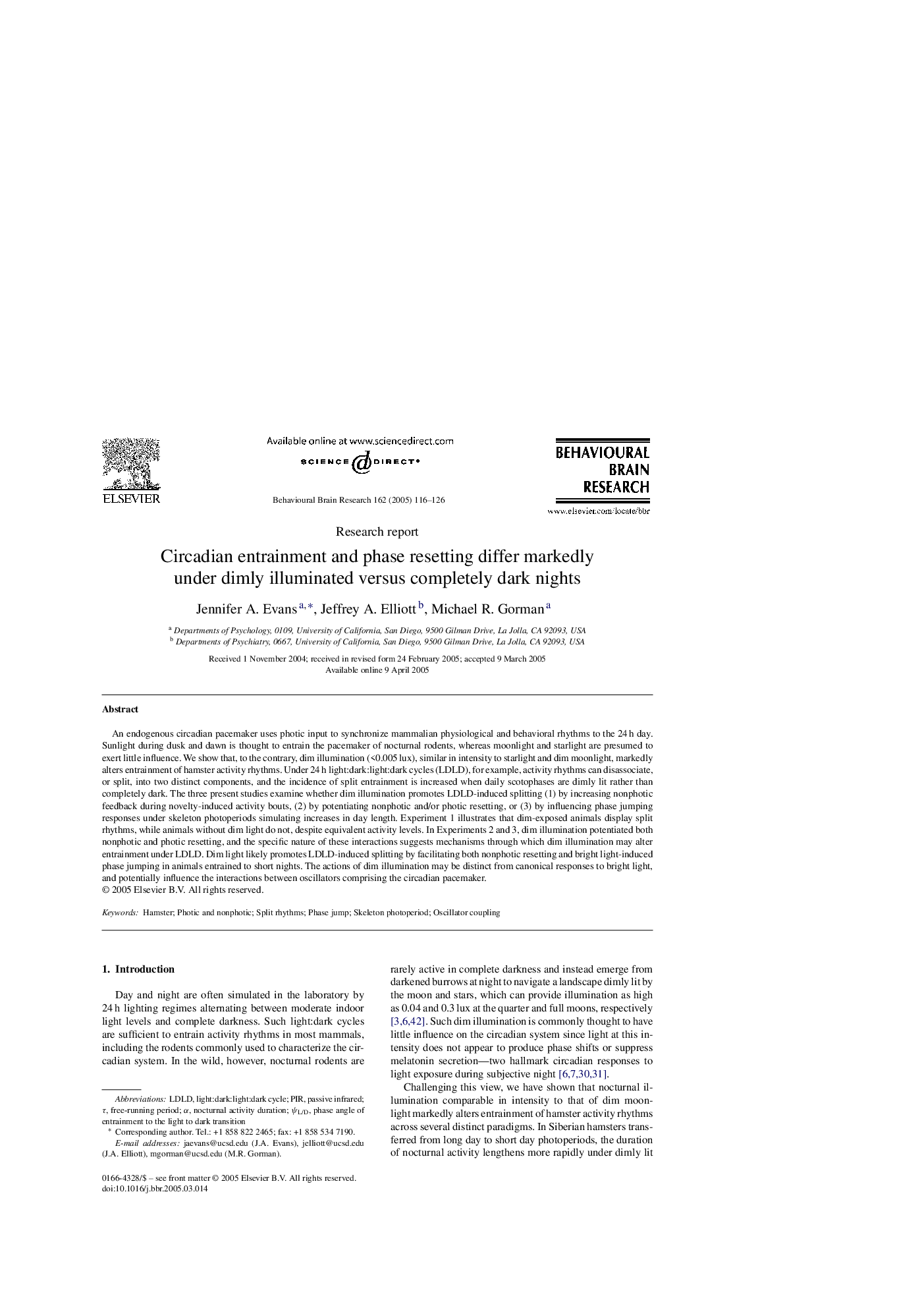| کد مقاله | کد نشریه | سال انتشار | مقاله انگلیسی | نسخه تمام متن |
|---|---|---|---|---|
| 9406551 | 1290128 | 2005 | 11 صفحه PDF | دانلود رایگان |
عنوان انگلیسی مقاله ISI
Circadian entrainment and phase resetting differ markedly under dimly illuminated versus completely dark nights
دانلود مقاله + سفارش ترجمه
دانلود مقاله ISI انگلیسی
رایگان برای ایرانیان
موضوعات مرتبط
علوم زیستی و بیوفناوری
علم عصب شناسی
علوم اعصاب رفتاری
پیش نمایش صفحه اول مقاله

چکیده انگلیسی
An endogenous circadian pacemaker uses photic input to synchronize mammalian physiological and behavioral rhythms to the 24Â h day. Sunlight during dusk and dawn is thought to entrain the pacemaker of nocturnal rodents, whereas moonlight and starlight are presumed to exert little influence. We show that, to the contrary, dim illumination (<0.005Â lux), similar in intensity to starlight and dim moonlight, markedly alters entrainment of hamster activity rhythms. Under 24Â h light:dark:light:dark cycles (LDLD), for example, activity rhythms can disassociate, or split, into two distinct components, and the incidence of split entrainment is increased when daily scotophases are dimly lit rather than completely dark. The three present studies examine whether dim illumination promotes LDLD-induced splitting (1) by increasing nonphotic feedback during novelty-induced activity bouts, (2) by potentiating nonphotic and/or photic resetting, or (3) by influencing phase jumping responses under skeleton photoperiods simulating increases in day length. Experiment 1 illustrates that dim-exposed animals display split rhythms, while animals without dim light do not, despite equivalent activity levels. In Experiments 2 and 3, dim illumination potentiated both nonphotic and photic resetting, and the specific nature of these interactions suggests mechanisms through which dim illumination may alter entrainment under LDLD. Dim light likely promotes LDLD-induced splitting by facilitating both nonphotic resetting and bright light-induced phase jumping in animals entrained to short nights. The actions of dim illumination may be distinct from canonical responses to bright light, and potentially influence the interactions between oscillators comprising the circadian pacemaker.
ناشر
Database: Elsevier - ScienceDirect (ساینس دایرکت)
Journal: Behavioural Brain Research - Volume 162, Issue 1, 1 July 2005, Pages 116-126
Journal: Behavioural Brain Research - Volume 162, Issue 1, 1 July 2005, Pages 116-126
نویسندگان
Jennifer A. Evans, Jeffrey A. Elliott, Michael R. Gorman,